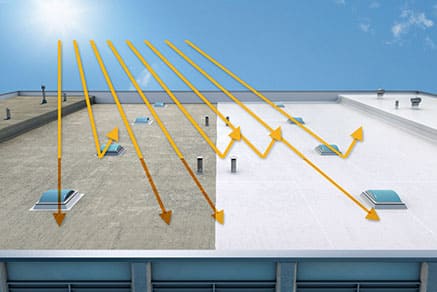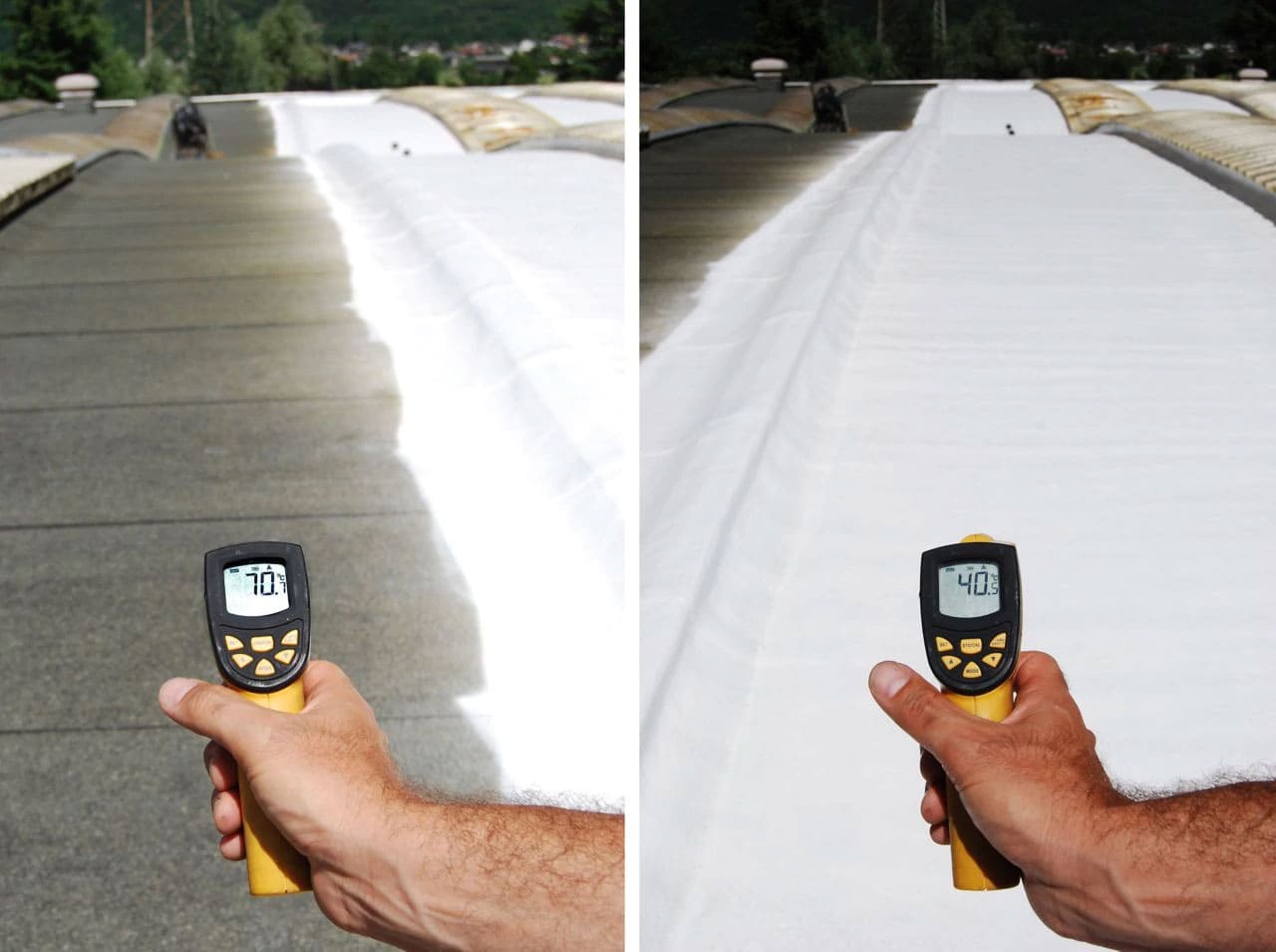How do Cool Roofs Work?
Cool roofs have the ability to reflect sunlight and repel heat because the roofs are prepared, covered or coated with materials that have special characteristics. These are typically white roofs and they reduce the heat island phenomenon, minimizing thermal impact on the microclimate and on the local environment. Modern cool roofs include highly reflective thermoplastic and liquid-applied membranes and coatings that provide a full range of benefits over a long service life.
Image depicts the energy flow of sunlight hitting a conventional flat roof (left) and a cool roof covered with a membrane or coating (right).

Efficiency of Cool Roofs
Efficiency of Cool Roofs is Measured with 3 Main Indicators:
SOLAR REFLECTANCE (SR)
The ability of the surface of a material to reflect visible and non-visible solar radiation (infrared and ultraviolet) is known as solar reflectance.
Solar reflectance ranges from 0 for black surfaces to 1 for white surfaces. White surfaces have high solar reflectance and low absorption, whereas dark ones have
low reflectance and high absorption.
THERMAL EMITTANCE (IE)
The ability of a surface to emit thermal radiation in the infrared (heat) range is known as thermal emittance.
Thermal emittance ranges from 0 to 1, depending on the type of material. The higher the emittance, the lower the surface temperature will be. Coatings on metal have lower
emittance than polymeric synthetic surfaces.
SOLAR REFLECTANCE INDEX (SRI)
The solar reflectance index (SRI) expresses the ability of a roofing material to reflect solar energy. It is defined such that a standard black color
(solar reflectance of 0.05, emittance of 0.90) has a value of 0, whereas a standard white (reflectance of 0.80, emittance of 0.90) has a value of 100. The higher the SRI value, the
more suitable the material for use on a cool roof.
Cool Roofs Save Energy

Energy used to cool buildings in summer represents a major portion of overall energy consumption. It results in CO2 emissions, and this will increase as outdoor temperatures rise. Increased indoor temperatures in summer reduce general comfort and people’s productivity. Passive solutions like cool roofs can minimize heat gain inside buildings, improving indoor conditions and can be cost-effective in multiple ways.
Benefits of cool roofs for energy savings and reducing urban summer temperatures. The promotion of cool roofs to reduce cooling energy usage and peak-power demand of air-conditioned buildings. Solar reflectance is the most important characteristic of a roofing membrane to achieve the highest energy savings during warmer months.

